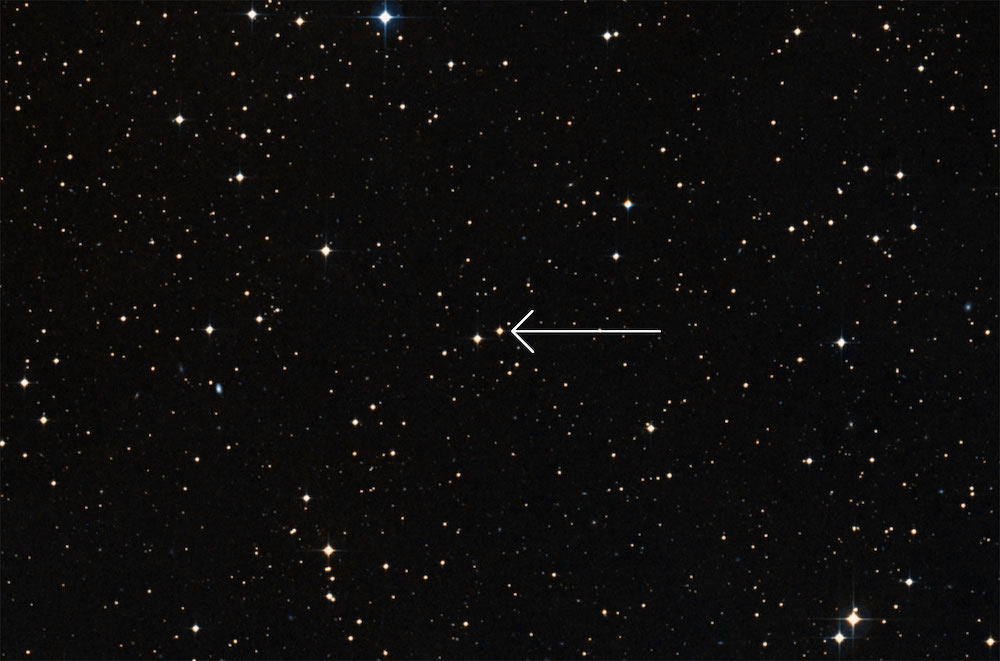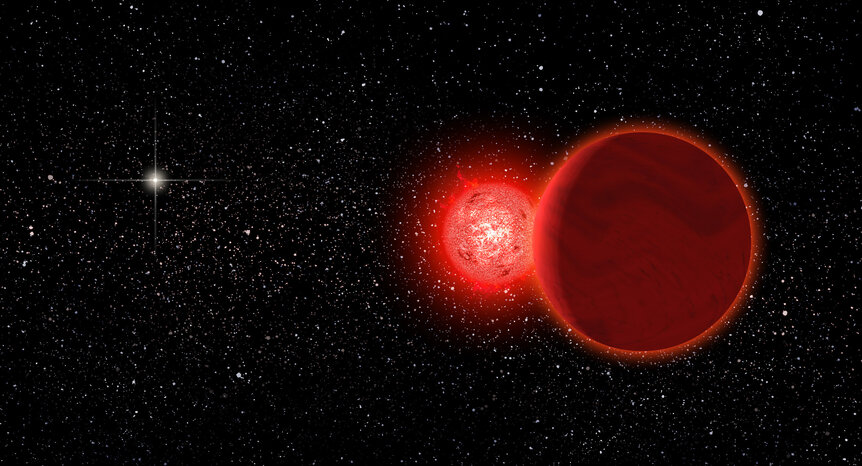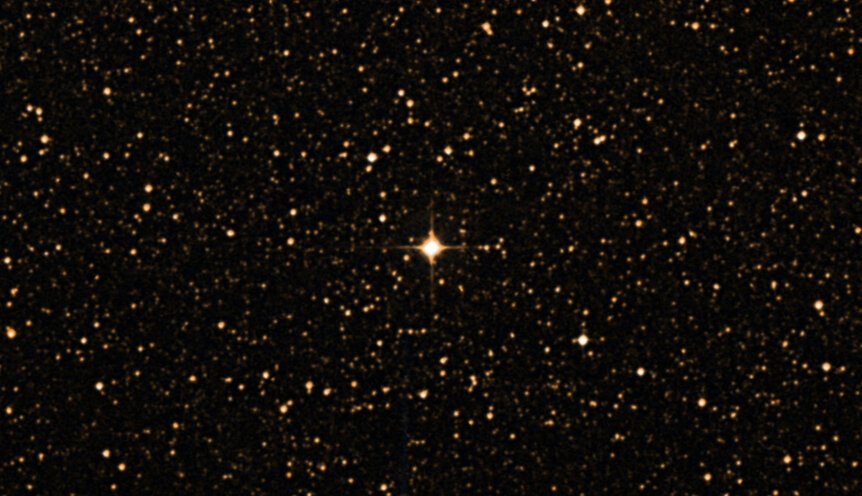Create a free profile to get unlimited access to exclusive videos, sweepstakes, and more!
Over time, some stars get uncomfortably close to the Sun
Several stars in the recent past have given us a cosmically close shave.

The Sun, like every star in the Milky Way, orbits the center of our galaxy. But they don’t all move in the same direction or at the same speed, and that means, over time, some stars pass the Sun in their galactic paths.
And some come pretty close to us.
Right now the closest star to the Sun is Proxima Centauri, a little over 4.2 light-years away; roughly 40 trillion kilometers. A decent distance, and about average for stars in this neck of the galaxy. But over the Sun’s lifetime of 4.6 billion years many stars have come much closer than that.
Trying to figure out which star passed how close and when isn’t easy. While a star can zip past us at tens of thousands of kilometers per hour, perspective due to its great distance makes it appear to crawl across the sky, taking years or even centuries to see any motion.
However, the European Space Agency’s Gaia satellite was designed to measure just that. It looks at well over a billion stars over and again, measuring their position, colors, brightness, and motion over time. It’s so precise that nearby stars can have their motions backtracked to see if they got anywhere near us in the past.
A few years ago, research using Gaia data indicated that the last such close encounter was about 70,000 years ago, when the star WISE J072003.20-084651.2 — also called Scholz’s Star, after the discoverer — passed just 0.8 light-years from the Sun.
But that was then. Every few years the folks with Gaia release updated data from the mission, with newer numbers. This generally improves the accuracy of the motion measurements, because the longer you look at a star the more it moves and the easier that motion is to see. The third such data release occurred in 2022, and a team of astronomers used it to review the data on Scholz’s Star [link to paper].
Things changed with the revised numbers. They found the encounter occurred more like 80,000 years ago, and the distance was more like 1.08 light-years, with a small uncertainty of just 0.026 light-years.
They determined this statistically. There are some small uncertainties in the motion measurements, which means that the longer you trace the motion back in time the more uncertain it gets. So what they did is run simulations of the star’s motion using the most likely velocity, then running it again and again, varying that velocity by a little bit each time. This builds up statistics of the possible motions of the star over time — if you’re curious, I described this method in an article from a few years ago.
The newly revised distance is quite a bit farther out, more than 0.2 light-years. The astronomers then asked, has there been another star that passed even closer with a high degree of statistical confidence?
The answer is yes! They found that the star UCAC4 237-008148 also once swung past the Sun. In this case it passed us at 0.844 ± 0.02 light years about 1.158 million years ago. Even within the uncertainty that’s closer than Scholz’s Star, breaking the record.
I’ll note that today, UCAC4 237-008148 is about 318 light-years away — a million years is a long time for it to move off — and Scholz’s Star is only 22 light years distant.
The astronomers also looked at a third star, HD 7977, about 246 light-years from us now. They found that about 2.77 million years ago it gave us the incredibly close shave of just 0.49 light-years! That’s definitely violating our personal space.
I’m not being overly metaphoric there. Surrounding the Sun past Neptune are trillions of icy and rocky objects generically called Trans-Neptunian Objects; there’s a roughly spherical cloud of them that extends out to a distance of a light-year called the Oort Cloud. HD 7977 passed right through them! The star is roughly the same size and mass as the Sun, so its gravity would’ve jostled those objects, sending many of them earthward. They’re essentially cometary bodies, some of which are quite large. Getting hit by one would’ve been an extinction level event.
And hmmm, the Pliocene Epoch ended about 2.6 million years ago… and there’s a big impact called the Eltanin Impact that occurred about 2.5 million years ago from an object a couple of kilometers across. Correlation isn’t causation, and it may very well be coincidence with HD 7977’s pass, but it gives one pause.
I’ll note that there are no large impacts associated with the passage of either Scholz’s Star or UCAC4 237-008148. The former is a very low-mass red dwarf with a brown dwarf companion, and the latter somewhat less massive than the Sun. Still, if either had caused a ruckus in the solar system it should have been obvious.
So those are stars that zipped by us in the past. What about the future? The astronomers in this new work didn’t look into that, but with the new Gaia data I imagine that will be done soon. As of now, using older and less-accurate data from the Hipparcos satellite, the next star to come close is Gliese 710, a red dwarf that will slide past us at a hair-raising 0.163 light-years about 1.3 million years from now. I’d love to see how this might change with the new Gaia data.
The Milky Way is a busy galaxy, with a couple of hundred billion stars in it. But it’s also a big galaxy, with lots of room, and at the moment no stars are anywhere near us. But it’s interesting to think that this has not been true in the past, nor will it be for the future.




























